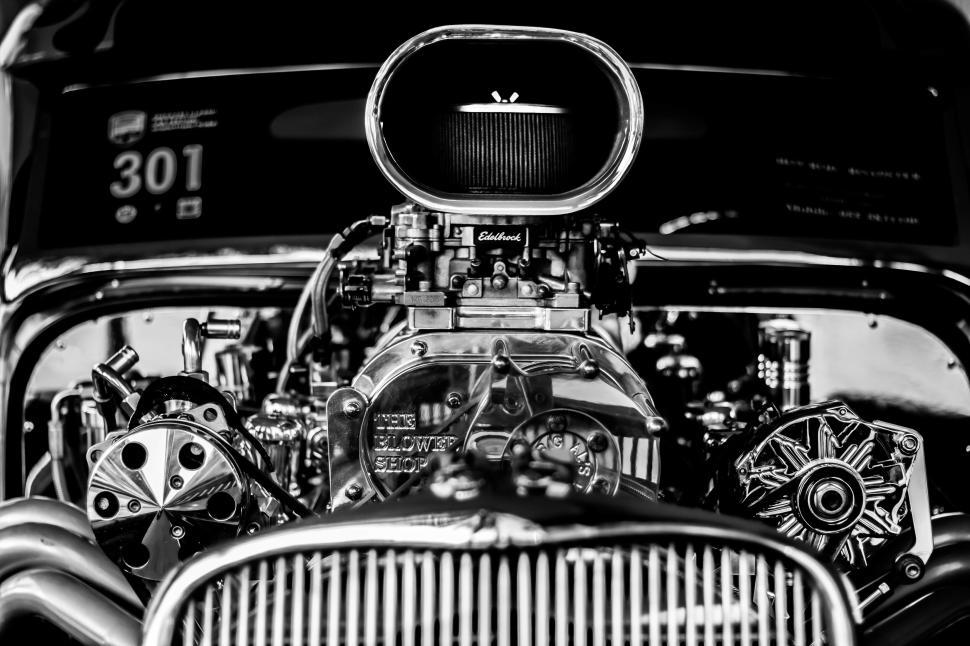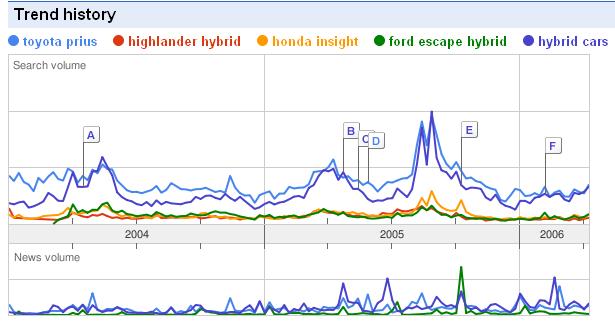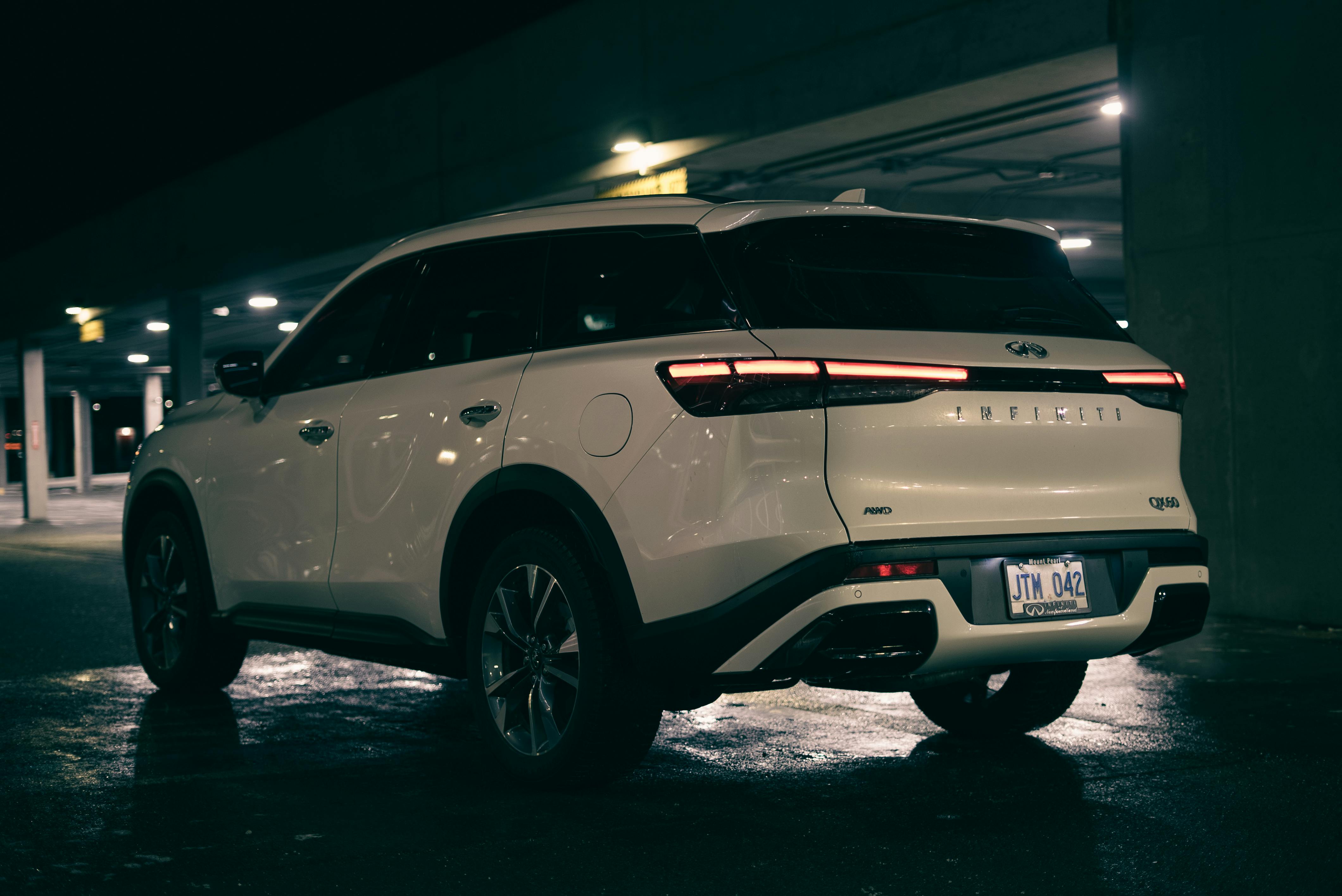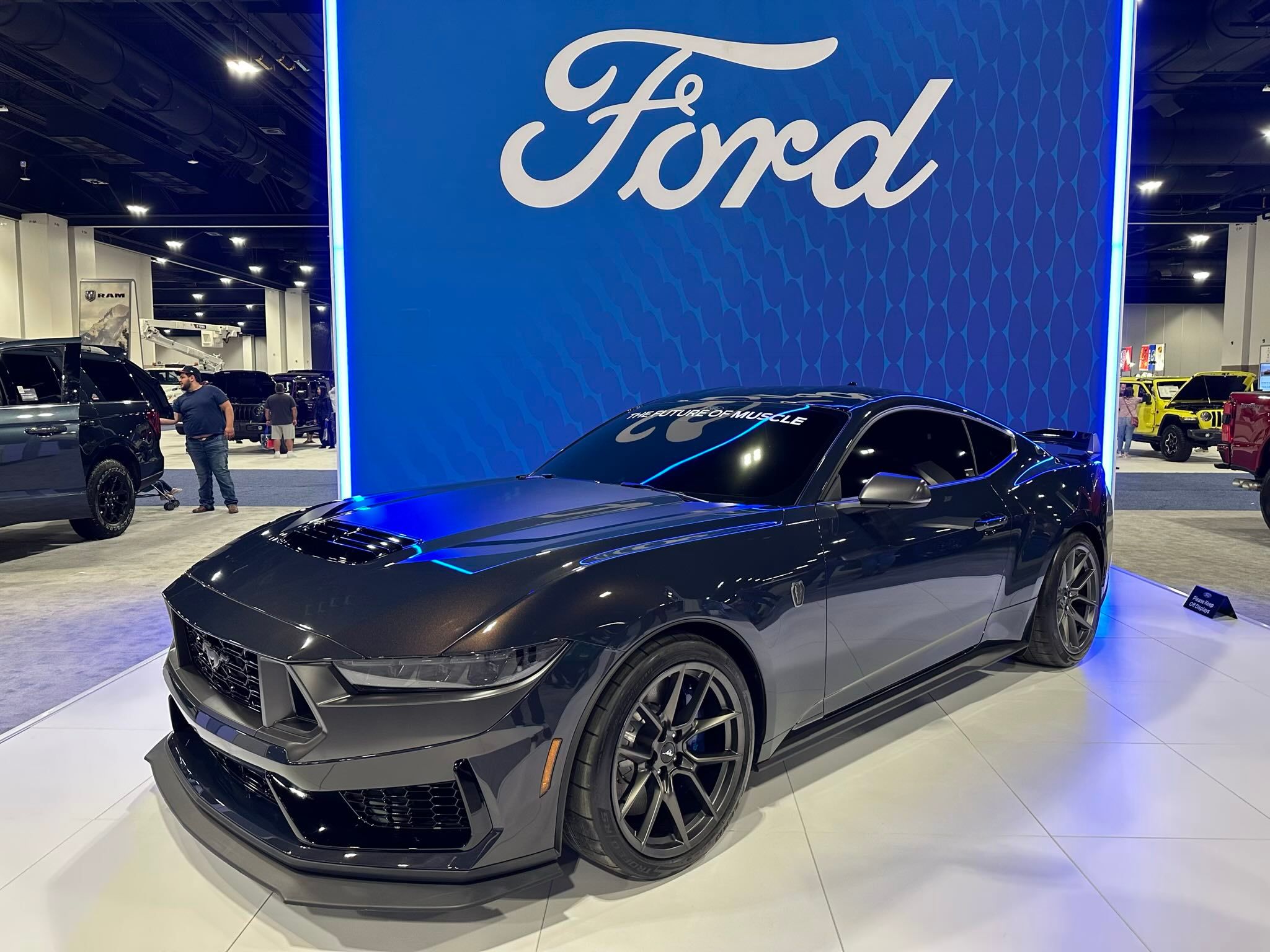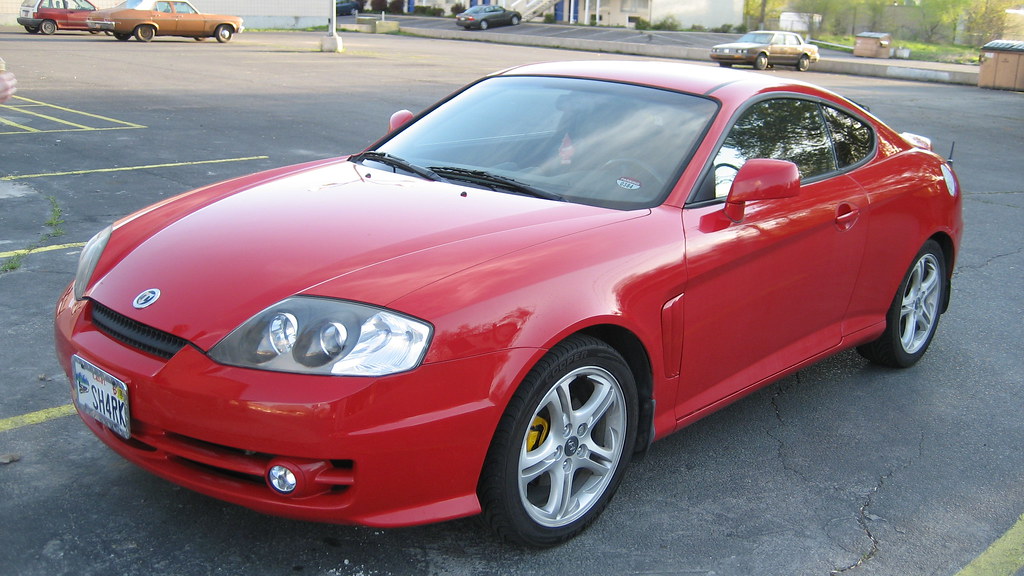
Let’s be honest, the automotive landscape has become a bit… monochrome. Walk into any dealership today, and you’re likely to be greeted by an army of silver, white, black, and various shades of gray. It’s practical, sure, and probably good for resale value, but where’s the soul? Where’s the vibrant personality that once made picking out a new car feel like a genuine expression of self?
It wasn’t always this way. There was a time when manufacturers weren’t afraid to splash some serious color across their sheet metal, transforming ordinary vehicles into head-turning classics. The 1980s, for instance, introduced a range of bold and unusual car paint colors that truly reflected the era’s unique style, even if many of those shades were eventually phased out due to shifting consumer preferences, safety concerns, cost, or durability issues.
But beyond those practical considerations, there’s a whole category of colors that didn’t just exist; they *defined* eras and etched themselves into the very fabric of car culture. These aren’t just paints; they’re automotive legends, and many of the most distinctive ones have sadly disappeared from option lists. With retro styling making a serious comeback, we’re here to argue that it’s high time for manufacturers to revisit some of these truly iconic hues. Let’s kick off our deep dive into the first six.

1. **Plum Crazy Purple (Dodge)**Few colors in the history of American motoring scream muscle car era quite like Dodge’s Plum Crazy Purple. This isn’t just any shade of violet; it’s a vibrant, aggressive statement that adorned some of Mopar’s most legendary performance machines during the late 1960s and early 1970s. Challengers and Chargers wearing this bold hue weren’t just cars; they were instant icons, embodying the raw, rebellious spirit of that golden age of muscle.
What’s truly remarkable about Plum Crazy is its undeniable staying power. Even after its initial run, the color’s appeal never faded. Recognizing this enduring magic, Dodge actually brought Plum Crazy back for limited production runs in 2010, 2014, and 2016. Each time it returned, enthusiasts swarmed dealerships, proving unequivocally that this audacious hue still captures imaginations decades after its original splash.
The real genius of Plum Crazy lies in its perfect balance. It manages to be aggressively eye-catching without ever veering into juvenile territory, a truly difficult feat for any purple, let alone one on a high-performance machine. It’s more than just paint; Plum Crazy represents an era when American automakers weren’t afraid to be genuinely bold, standing in stark contrast to today’s often conservative market dominated by the ubiquitous grayscale palette.
This color isn’t merely a historical footnote; it’s a living legend that commands respect. Its brief comebacks consistently generated buzz and media coverage that far exceeded what typical new paint options ever achieve. Collectors, keenly aware of its unique allure, actively seek out Plum Crazy vehicles, often paying significant premiums at auctions for well-preserved examples. This perfectly demonstrates the lasting power of a truly distinctive factory paint option, proving that courageous color choices can become an integral, cherished part of a brand’s heritage and identity.
Car Model Information: 2020 Dodge Challenger R/T
Name: Dodge Challenger
Production: 1969–1974,1977–1983,2008–2023
ModelYears: 1970–1974,1978–1983,2008–2023
Caption: 2015 Dodge Challenger SRT Hellcat
Manufacturer: Dodge
Categories: 1970s cars, 1980s cars, 2000s cars, 2010s cars, 2020s cars
Summary: The Dodge Challenger is the name of three generations of automobiles produced by the American automobile manufacturer Dodge. However, the first use of the Challenger name by Dodge dates back to 1959 for marketing a “value version” of the full-sized Coronet Silver Challenger.
From model years 1970 to 1974, the first-generation Dodge Challenger pony car was built using the Chrysler E platform in hardtop and convertible body styles sharing significant components with the Plymouth Barracuda.
The second generation, from model years 1978 to 1983, was a rebadged Mitsubishi Galant Lambda / Sapporo, a coupe version of an economical compact car.
The third and most recent generation is a full-size muscle car that was introduced in early 2008 initially as a rival to the evolved fifth generation Ford Mustang and the fifth generation Chevrolet Camaro.
In November 2021, Stellantis announced that the 2023 model year would be the final model year for both the LD Dodge Charger and LA Dodge Challenger, as the company will focus its plans on electric vehicles rather than fossil fuel-powered vehicles, due to tougher emissions standards required by the Environmental Protection Agency for the 2023 model year. Challenger production ended on December 22, 2023, and the Brampton, Ontario, assembly plant will be re-tooled to assemble an electrified successor.
Get more information about: Dodge Challenger
Buying a high-performing used car >>>
Brand: Dodge Model: Challenger
Price: $23,450 Mileage: 70,496 mi.
Read more about: The 15 Most Iconic Automotive Paint Colors That Defined Eras

2. **Grabber Blue (Ford)**Ford’s Grabber Blue burst onto the scene with the Mustang in 1969, and it quickly cemented its place as one of the most recognizable colors in the entire pony car universe. This isn’t just a blue; it’s an electric, high-octane shade that perfectly encapsulated the Mustang’s youthful energy. More importantly, it offered something truly distinct and unforgettable, setting it apart from its competitors with a striking vibrancy that looked phenomenal against the black accents often found on performance models.
Like other legendary hues, Grabber Blue possesses an undeniable, timeless appeal. Ford has, thankfully, periodically reintroduced versions of this iconic color over the decades, most recently gracing the 2017 Mustang for its 50th anniversary. Each time it makes a comeback, the color proves just as eye-catching and relevant on modern sheet metal as it was on those classic fastbacks of yesteryear.
What makes Grabber Blue so exceptional is its masterful tightrope walk between boldness and good taste. It’s undeniably vibrant, a color that demands attention, yet it deftly avoids the overly flashy or garish quality that can quickly date other bright colors. Instead, Grabber Blue has a remarkable ability to enhance the Mustang’s design lines, highlighting its muscular contours without ever overpowering them, allowing the car’s inherent style to shine through.
This shade has become so intimately associated with Ford performance that it’s practically woven into the brand’s visual language. Evidence? Photos of Grabber Blue Mustangs consistently generate more social media engagement than their counterparts in standard colors, demonstrating its immediate visual impact. It also photographs exceptionally well, appearing vibrant and dynamic in almost any lighting condition, making it a dream for marketing teams aiming to showcase vehicle lines and contours. Its return would undoubtedly provide the current Mustang lineup with an authentic, powerful connection to its storied heritage.
Car Model Information: 2023 Ford Mustang Mach-E GT
Name: Ford Mustang
Caption: 2018 Ford Mustang GT 5.0
Aka: Ford T5 (Germany)
Manufacturer: Ford Motor Company
Production: March 1964 – present
ModelYears: 1965–present
Class: Unbulleted list
BodyStyle: Unbulleted list
Layout: Front-engine, rear-wheel-drive layout
Categories: 1970s cars, 1980s cars, 1990s cars, 2+2 coupés, 2000s cars
Summary: The Ford Mustang is an American automobile manufactured and marketed by Ford since 1964, as Ford’s longest nameplate in continuous production. Currently in its seventh generation, it is the fifth-best selling Ford car nameplate. The namesake of the “pony car” automobile segment, the Mustang was developed as a highly styled line of sporty coupes and convertibles derived from existing model lines, initially distinguished by its pronounced “long hood, short deck” proportions.
Originally predicted to sell 100,000 vehicles yearly, the 1965 Mustang became the most successful vehicle launch since the 1927 Model A. Introduced on April 17, 1964 (16 days after the Plymouth Barracuda), over 400,000 units were sold in its first year; the one-millionth Mustang was sold within two years of its launch. In August 2018, Ford produced the 10-millionth Mustang; matching the first 1965 Mustang, the vehicle was a 2019 Wimbledon White convertible with a V8 engine.
The success of the Mustang launch led to multiple competitors from other American manufacturers, including the Chevrolet Camaro and Pontiac Firebird (1967), AMC Javelin (1968), and Dodge Challenger (1970). It also competed with the Plymouth Barracuda, which was launched around the same time. The Mustang also had an effect on designs of coupes worldwide, leading to the marketing of the Toyota Celica and Ford Capri in the United States (the latter, by Lincoln-Mercury). The Mercury Cougar was launched in 1967 as a unique-bodied higher-trim alternative to the Mustang; during the 1970s, it included more features and was marketed as a personal luxury car.
From 1965 until 2004, the Mustang shared chassis commonality with other Ford model lines, staying rear-wheel-drive throughout its production. From 1965 to 1973, the Mustang was derived from the 1960 Ford Falcon compact. From 1974 until 1978, the Mustang (denoted Mustang II) was a longer-wheelbase version of the Ford Pinto. From 1979 until 2004, the Mustang shared its Fox platform chassis with 14 other Ford vehicles (becoming the final one to use the Fox architecture). Since 2005, the Mustang has used the D2C platform, unique to the Mustang.
Through its production, multiple nameplates have been associated with the Ford Mustang series, including GT, Mach 1, Boss 302/429, Cobra (separate from Shelby Cobra), and Bullitt, along with “5.0” fender badging (denoting 4.9 L OHV or 5.0 L DOHC V8 engines).
Get more information about: Ford Mustang
Buying a high-performing used car >>>
Brand: Ford Model: Mustang
Price: $35,799 Mileage: 5,465 mi.
Read more about: The 15 Most Iconic Automotive Paint Colors That Defined Eras

3. **Rallye Green (Chevrolet)**Chevrolet’s Rallye Green made its distinctive debut during the heart of the muscle car era. This wasn’t just another green; it was a sophisticated metallic green that adorned iconic Camaros and Chevelles, offering a captivating visual depth that shifted beautifully between emerald and deep forest depending on how the light caught its surface. Unlike some other flamboyant period colors, Rallye Green managed to offer a compelling blend of sophistication alongside raw sportiness, a truly rare combination.
It presented a perfect alternative for those discerning buyers who desired something genuinely distinctive but perhaps not as overtly loud as the typical, more common muscle car hues. Sadly, this elegant color mysteriously disappeared from Chevrolet’s palette by the mid-1970s and has not been properly seen since. Given the advancements in modern metallic paint technologies, a contemporary interpretation of Rallye Green could be even more stunning and intricate than the original.
Here’s the kicker: green, as a primary automotive color, has been largely abandoned by most manufacturers. This glaring omission creates an incredible opportunity for Chevrolet to stand out from the crowd by reviving this truly classic shade. Rallye Green isn’t just a forgotten color; it represents a significant untapped market opportunity in today’s rather bland color landscape.
While we consistently see a proliferation of red, blue, and yellow performance cars, green has virtually vanished from modern performance vehicles, despite a persistent and vocal interest from enthusiasts across online forums and social media groups. Moreover, green’s inherent environmental associations align remarkably well with current marketing priorities. A manufacturer could smartly position a revived Rallye Green as both a proud heritage nod and an environmentally conscious choice, expertly bridging classic appeal with contemporary values. This color would look particularly striking on today’s angular designs, providing a distinctive option in an increasingly homogenized automotive world.
Car Model Information: 2018 Chevrolet Camaro 1SS
Name: Chevrolet Camaro
Manufacturer: Chevrolet
Production: 1966–2002,2009–2023
ModelYears: 1967–2002,2010–2024
Class: Pony car
BodyStyle: coupe,convertible
Platform: GM F platform,GM Zeta platform,GM Alpha platform
Layout: Front-engine, rear-wheel-drive layout
Categories: 1970s cars, 1980s cars, 1990s cars, 2+2 coupés, 2000s cars
Summary: The Chevrolet Camaro is a mid-size American automobile manufactured by Chevrolet, classified as a pony car. It first went on sale on September 29, 1966, for the 1967 model year and was designed to compete with the Ford Mustang. The Camaro shared its platform and major components with the Firebird, produced by General Motors’ Pontiac division that was also introduced for the 1967 model year.
Four distinct generations of the Camaro were developed before production ended in 2002. The nameplate was revived on a concept car that evolved into the fifth-generation Camaro; production started on March 16, 2009.
Production of the sixth generation of the Camaro ended in December 2023, for the 2024 model year.
Get more information about: Chevrolet Camaro
Buying a high-performing used car >>>
Brand: Chevrolet Model: Camaro
Price: $33,988 Mileage: 49,199 mi.
Read more about: The 15 Most Iconic Automotive Paint Colors That Defined Eras

4. **Petty Blue (Plymouth/Dodge)**When we talk about colors steeped in automotive legend, Petty Blue instantly comes to mind. This distinctive light blue shade is not only iconic but became absolutely synonymous with racing success throughout the 1960s and 1970s, named, of course, for the legendary NASCAR driver Richard Petty. It’s more than just a color; it’s a living piece of motorsport history.
The unique story behind its origin only adds to its mystique. The color actually came about when Petty himself famously mixed white and dark blue paints to create his instantly recognizable signature look. Chrysler, recognizing the immense appeal and cultural significance, later made it an official factory option for road cars, allowing countless fans to literally own a piece of racing history and connect directly to their hero.
This shade is, without a doubt, unmistakable. It occupies a truly unique place in the color spectrum—brighter than a soft baby blue, yet less intense than a stark sky blue. During Plymouth’s undeniable performance heyday, Petty Blue was proudly offered on a variety of Mopar vehicles, including the legendary Road Runners and Super Bees. That direct, undeniable connection to racing royalty bestowed upon the color a legitimacy and widespread appeal that no manufactured, marketing-driven color name could ever hope to match.
What truly elevates Petty Blue is its authentic, unshakeable connection to motorsport heritage. In an era where manufacturers constantly churn out endless ‘special editions’ that often feel, well, manufactured, a color with genuine racing provenance like Petty Blue stands leagues apart. The shade carries built-in storytelling potential that marketing departments dream about, and its revival would instantly connect modern Dodge and Chrysler products to their incredibly rich competition heritage. It also hits a sweet spot in terms of visibility, being noticeably vibrant without ever being garish, photographing beautifully, and looking utterly distinctive under showroom lights.
Read more about: The 15 Most Iconic Automotive Paint Colors That Defined Eras

5. **Autumn Bronze (Pontiac)**Pontiac’s Autumn Bronze, introduced in the late 1960s, was a masterclass in sophisticated color palettes. This wasn’t just a brown; it was a complex copper-bronze hue, a metallic marvel featuring subtle gold and amber undertones that shifted dramatically depending on the lighting conditions. It was a color that truly came alive, revealing different facets of its character as the sun moved or the car passed under streetlights. It perfectly exemplified Pontiac’s ‘premium performance’ positioning, offering an upscale and refined alternative to the more boisterous, brighter colors often associated with muscle cars.
While Pontiac, as a brand, is sadly no longer with us, the spirit of Autumn Bronze lives on and holds immense potential. General Motors, the parent company, could brilliantly revive this distinctive color for brands like Buick or Cadillac’s performance models. The timing couldn’t be better, as bronze and copper tones have recently enjoyed a significant resurgence in popularity across interior design and high-end fashion, strongly suggesting that now is the perfect moment for a sophisticated automotive application.
Autumn Bronze isn’t just a color; it represents a level of sophistication that today’s ubiquitous silver and gray options simply cannot match. It offers a depth and a character that feels genuinely tasteful and elegant, a refreshing departure from the norm. The color’s remarkable ability to change dramatically from dawn to dusk, creating a different look depending on viewing conditions, gives it a chameleon-like quality that is particularly captivating in our current age of social media sharing.
High-end watch manufacturers and luxury goods brands have long successfully employed bronze tones to effectively signal exclusivity and unparalleled craftsmanship. An astute automaker could brilliantly leverage these same powerful associations, simultaneously connecting to its rich heritage while tapping into modern luxury trends. With neutral colors overwhelmingly dominating premium vehicle segments, a well-executed Autumn Bronze option would instantly distinguish any model line offering it, positioning it as an exclusive and highly desirable color choice.
Read more about: The 15 Most Iconic Automotive Paint Colors That Defined Eras
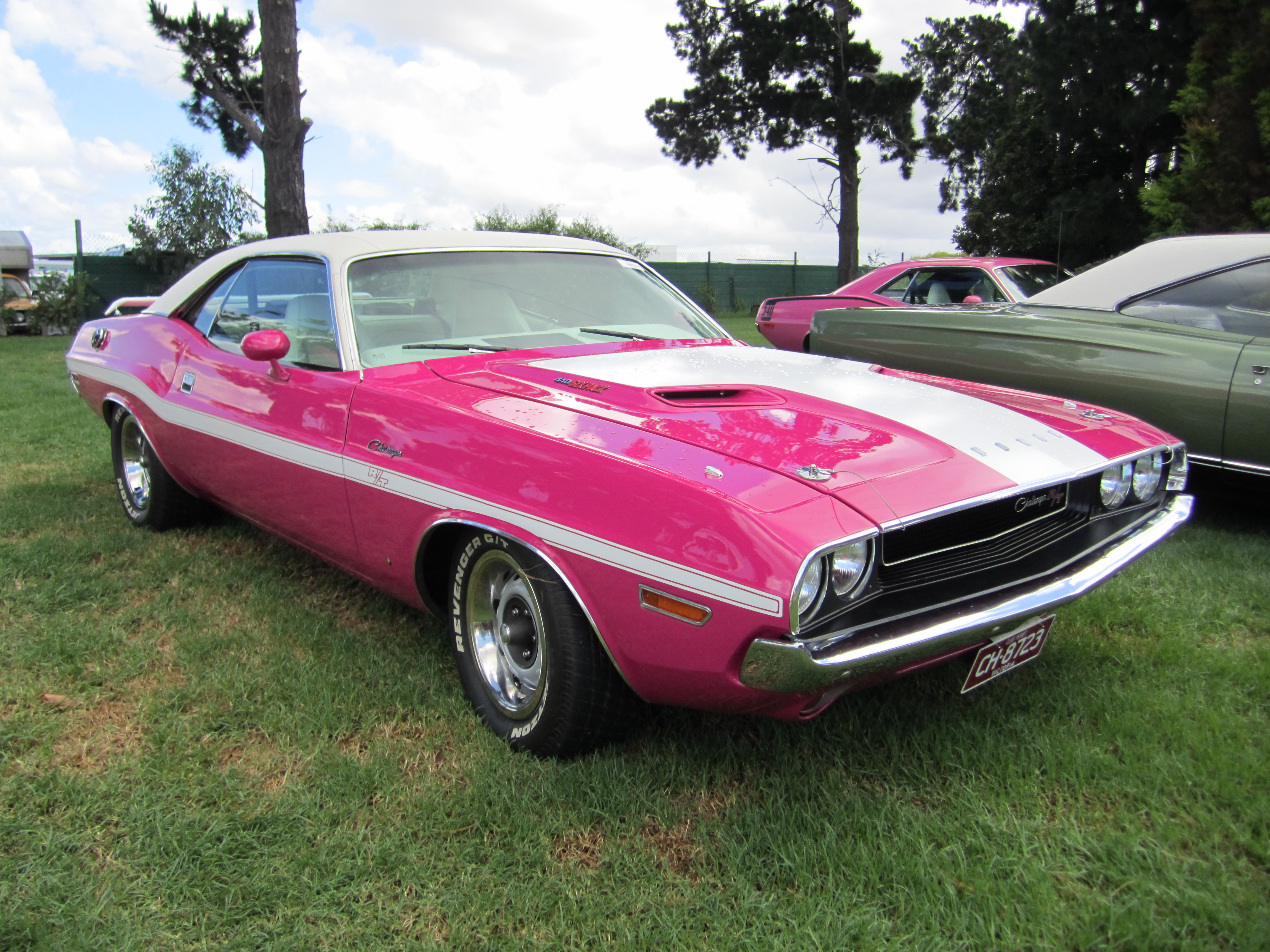
6. **Panther Pink (Dodge)**For sheer audacity, few factory colors, if any, can truly rival Dodge’s Panther Pink. Also known as Moulin Rouge at Plymouth, this truly shocking pink shade represented the early 1970s at their most uninhibited and audacious. It appeared on legendary Challengers, Chargers, and other Mopar muscle cars during a brief, glorious period when automakers were fearlessly exploring increasingly dramatic and attention-grabbing colors. This wasn’t just a paint job; it epitomized an era when cars were unequivocally meant to be noticed, to turn heads, and to stir conversations.
Despite, or perhaps precisely because of, its inherent flamboyance, Panther Pink has cultivated an incredibly dedicated following among collectors. Cars featuring this now-rare color frequently command significant premiums at auction, a testament to its unique place in automotive history. This shade isn’t merely a flamboyant anomaly; it represents automotive history at its most uninhibited, before fuel crises and increasingly stringent regulations began to subdue the industry’s creative expression, forcing a shift towards more conservative choices.
A properly executed, modern interpretation of Panther Pink would undoubtedly generate an immediate torrent of buzz and media attention in today’s notoriously conservative automotive color landscape. While some manufacturers periodically offer limited-run pink cars for various charity initiatives, none have yet had the courage to truly embrace it as a regular, mainstream production option. The first major brand bold enough to do so would capture attention far beyond what typical marketing budgets could ever hope to achieve, creating an instant sensation.
The color’s inherent rarity and bold statement make it exceptionally desirable among collectors and enthusiasts who are constantly seeking something truly different and distinct. Crucially, the rise of social media has created an environment where distinctive vehicles generate organic, viral exposure. This phenomenon potentially makes such bold color choices far more commercially viable than in previous decades. A modern Panther Pink option wouldn’t just be a paint; it would practically market itself through endless shares, posts, and admiring glances, becoming a viral sensation the moment it hit the streets.
Alright, so we’ve already taken a nostalgic cruise through some seriously epic paint jobs that, frankly, should still be gracing our roads. But hold on, because we’re not done yet! The monochrome menace hasn’t claimed all the vivid memories. We’ve still got more automotive treasures to uncover, more shades that once defined cool, shades that still pack a punch and prove that cars don’t have to be boring beige boxes on wheels. Let’s keep the engine revving and dive into the next chapter of forgotten brilliance, continuing our crusade to bring back some much-needed personality to today’s automotive landscape.
Car Model Information: 2020 Dodge Challenger R/T
Name: Dodge Challenger
Production: 1969–1974,1977–1983,2008–2023
ModelYears: 1970–1974,1978–1983,2008–2023
Caption: 2015 Dodge Challenger SRT Hellcat
Manufacturer: Dodge
Categories: 1970s cars, 1980s cars, 2000s cars, 2010s cars, 2020s cars
Summary: The Dodge Challenger is the name of three generations of automobiles produced by the American automobile manufacturer Dodge. However, the first use of the Challenger name by Dodge dates back to 1959 for marketing a “value version” of the full-sized Coronet Silver Challenger.
From model years 1970 to 1974, the first-generation Dodge Challenger pony car was built using the Chrysler E platform in hardtop and convertible body styles sharing significant components with the Plymouth Barracuda.
The second generation, from model years 1978 to 1983, was a rebadged Mitsubishi Galant Lambda / Sapporo, a coupe version of an economical compact car.
The third and most recent generation is a full-size muscle car that was introduced in early 2008 initially as a rival to the evolved fifth generation Ford Mustang and the fifth generation Chevrolet Camaro.
In November 2021, Stellantis announced that the 2023 model year would be the final model year for both the LD Dodge Charger and LA Dodge Challenger, as the company will focus its plans on electric vehicles rather than fossil fuel-powered vehicles, due to tougher emissions standards required by the Environmental Protection Agency for the 2023 model year. Challenger production ended on December 22, 2023, and the Brampton, Ontario, assembly plant will be re-tooled to assemble an electrified successor.
Get more information about: Dodge Challenger
Buying a high-performing used car >>>
Brand: Dodge Model: Challenger
Price: $23,450 Mileage: 70,496 mi.
Read more about: The 15 Most Iconic Automotive Paint Colors That Defined Eras
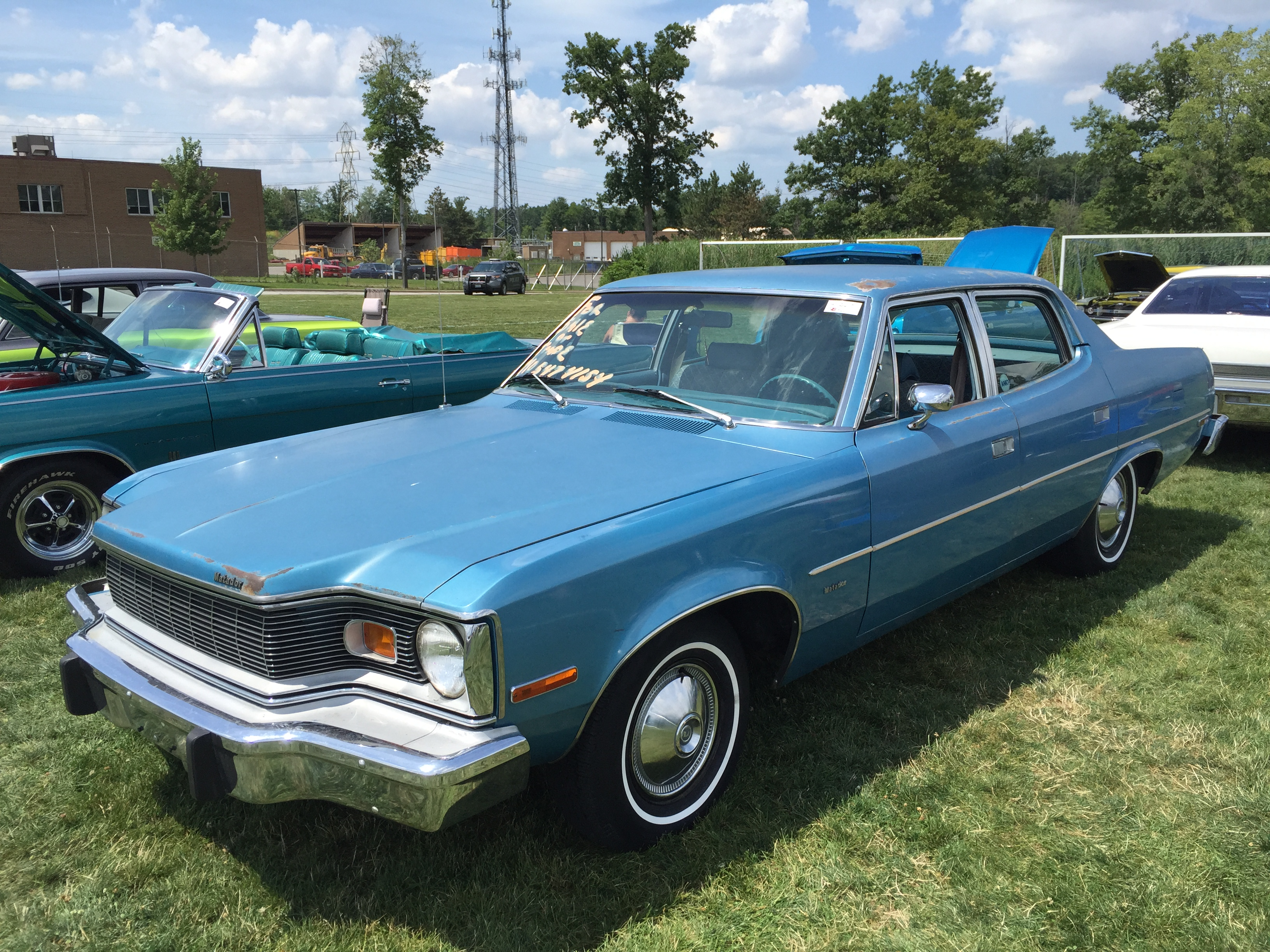
7. **Jamaica Blue (American Motors)**American Motors Corporation might be a bygone brand, but they absolutely nailed their color palette. Jamaica Blue stands as one of the most memorable automotive hues of the 1970s. This deep, rich turquoise roared onto the scene, adorning legendary Javelins, powerful AMXs, and other AMC performance models, instantly setting them apart.
Its distinctiveness was truly special, offering something different from conventional blues. It effortlessly captured the era’s adventurous, free-spirited vibe, making a statement without trying too hard. This shade danced between blue and green, shifting beautifully with the light.
That visual complexity and alluring depth are something flat blues can’t achieve, making Jamaica Blue a metallic artistry masterclass. With turquoise enjoying a massive resurgence in fashion and home décor, an automotive comeback couldn’t be more perfect. Imagine the impact!
Jeep, as AMC’s spiritual successor, is the natural home for a bold, heritage-rich color like Jamaica Blue. This hue represents a vibrant color family that has vanished from modern automotive options. Proper turquoise tones are virtually nonexistent in new cars today, despite their undeniable curb appeal.
Car Model Information: 2019 Lexus GX 460 Premium
Name: AMC Javelin
Caption: 1971 AMC Javelin SST
Manufacturer: American Motors Corporation
Aka: unbulleted list
Production: 1967–1974
ModelYears: 1968–1974
Assembly: unbulleted list
Designer: Dick Teague
Class: unbulleted list
BodyStyle: hardtop
Layout: Front-engine, rear-wheel drive layout
Platform: AMC’s “junior” cars
Predecessor: Rambler Marlin
Categories: 1970s cars, AMC vehicles, All articles that may contain original research, All articles with dead external links, All articles with unsourced statements
Summary: The AMC Javelin is an American front-engine, rear-wheel-drive, two-door hardtop automobile manufactured by American Motors Corporation (AMC) across two generations, 1968 through 1970 and 1971 through 1974 model years. The car was positioned and marketed in the pony car market segment.
Styled by Dick Teague, the Javelin was available in a range of trim and engine levels, from economical pony car to muscle car variants. In addition to manufacture in Kenosha, Wisconsin, Javelins were assembled under license in Germany, Mexico, Philippines, Venezuela, as well as Australia – and were marketed globally. American Motors also offered discounts to U.S. military personnel, and cars were taken overseas.
The Javelin won the Trans-Am race series in 1971, 1972, and 1976. The second-generation AMX variant was the first pony car used as a standard vehicle for highway police car duties by an American law enforcement agency.
Get more information about: AMC Javelin
Buying a high-performing used car >>>
Brand: American Motors Model: Javelin
Price: $30,991 Mileage: 72,932 mi.
Read more about: The 15 Most Iconic Automotive Paint Colors That Defined Eras

8. **Calypso Coral (Ford)**Ford’s Calypso Coral burst onto the scene in 1969 as a star in the Mustang’s “Spring Colors” promotion. This vibrant orangey-red beauty quickly became one of the most coveted shades for Ford performance vehicles. It truly captured that muscle car magic, radiating an unmistakable warmth and exhilarating energy.
What’s genius about Calypso Coral is its unique position: not quite red, not quite orange. It occupies a distinctive space few other manufacturers ever matched. Paired with iconic black accents, it creates dramatic contrast, emphasizing the car’s aggressive body lines.
While Ford has offered similar shades, none recaptured the original’s magic and precise essence. Its return would give modern Mustangs and Broncos a genuine heritage option. Calypso Coral perfectly balances distinctiveness and broad appeal.
Many buyers avoid pure orange, but Calypso’s reddish undertones make it accessible while retaining head-turning distinctiveness. It captures attention without appearing childish or garish—a tricky balance for any bright color. This shade has proven remarkably timeless, remaining fresh and appealing decades later.
Car Model Information: 2023 Ford Mustang Mach-E GT
Name: Ford Mustang
Caption: 2018 Ford Mustang GT 5.0
Aka: Ford T5 (Germany)
Manufacturer: Ford Motor Company
Production: March 1964 – present
ModelYears: 1965–present
Class: Unbulleted list
BodyStyle: Unbulleted list
Layout: Front-engine, rear-wheel-drive layout
Categories: 1970s cars, 1980s cars, 1990s cars, 2+2 coupés, 2000s cars
Summary: The Ford Mustang is an American automobile manufactured and marketed by Ford since 1964, as Ford’s longest nameplate in continuous production. Currently in its seventh generation, it is the fifth-best selling Ford car nameplate. The namesake of the “pony car” automobile segment, the Mustang was developed as a highly styled line of sporty coupes and convertibles derived from existing model lines, initially distinguished by its pronounced “long hood, short deck” proportions.
Originally predicted to sell 100,000 vehicles yearly, the 1965 Mustang became the most successful vehicle launch since the 1927 Model A. Introduced on April 17, 1964 (16 days after the Plymouth Barracuda), over 400,000 units were sold in its first year; the one-millionth Mustang was sold within two years of its launch. In August 2018, Ford produced the 10-millionth Mustang; matching the first 1965 Mustang, the vehicle was a 2019 Wimbledon White convertible with a V8 engine.
The success of the Mustang launch led to multiple competitors from other American manufacturers, including the Chevrolet Camaro and Pontiac Firebird (1967), AMC Javelin (1968), and Dodge Challenger (1970). It also competed with the Plymouth Barracuda, which was launched around the same time. The Mustang also had an effect on designs of coupes worldwide, leading to the marketing of the Toyota Celica and Ford Capri in the United States (the latter, by Lincoln-Mercury). The Mercury Cougar was launched in 1967 as a unique-bodied higher-trim alternative to the Mustang; during the 1970s, it included more features and was marketed as a personal luxury car.
From 1965 until 2004, the Mustang shared chassis commonality with other Ford model lines, staying rear-wheel-drive throughout its production. From 1965 to 1973, the Mustang was derived from the 1960 Ford Falcon compact. From 1974 until 1978, the Mustang (denoted Mustang II) was a longer-wheelbase version of the Ford Pinto. From 1979 until 2004, the Mustang shared its Fox platform chassis with 14 other Ford vehicles (becoming the final one to use the Fox architecture). Since 2005, the Mustang has used the D2C platform, unique to the Mustang.
Through its production, multiple nameplates have been associated with the Ford Mustang series, including GT, Mach 1, Boss 302/429, Cobra (separate from Shelby Cobra), and Bullitt, along with “5.0” fender badging (denoting 4.9 L OHV or 5.0 L DOHC V8 engines).
Get more information about: Ford Mustang
Buying a high-performing used car >>>
Brand: Ford Model: Mustang
Price: $35,799 Mileage: 5,465 mi.
Read more about: The 15 Most Iconic Automotive Paint Colors That Defined Eras
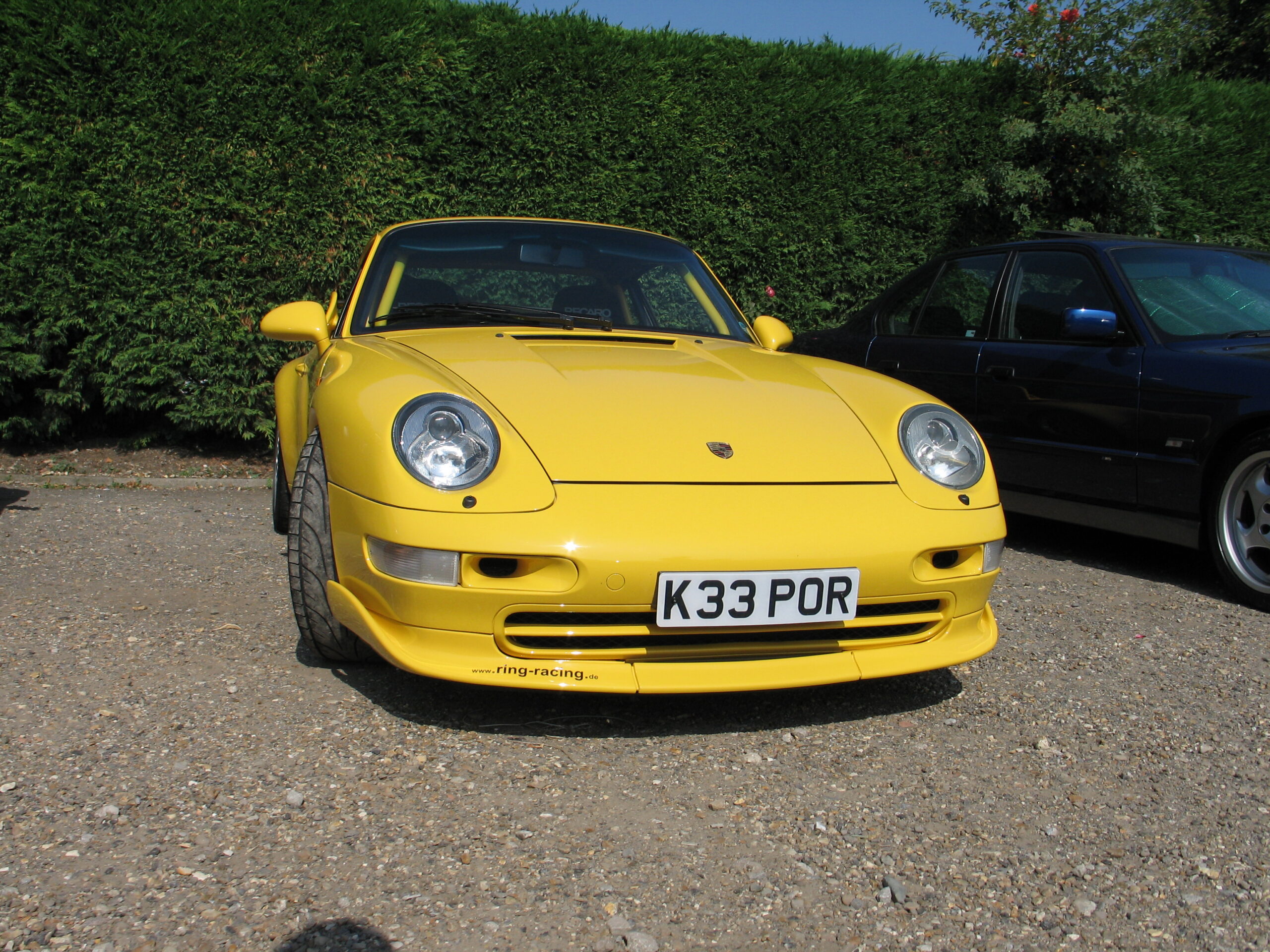
9. **Bahama Yellow (Porsche)**Porsche’s Bahama Yellow stands as one of the most iconic yellow shades ever on a production vehicle. Debuting in the late 1960s and early 1970s, this vibrant yellow with subtle green undertones adorned 911s and 914s. It perfectly complemented those cars’ distinctive shapes and racing heritage.
Unlike common yellows that appear flat or garish, Bahama Yellow offers captivating complexity and depth. Its subtle green influence gives it an unexpected, sophisticated quality rarely found in primary yellows. It’s not just shouting for attention; it’s confidently owning the spotlight.
Porsche’s bespoke custom program has offered other yellows, but none capture the original Bahama Yellow’s distinctive character. This shade truly nailed the art of making yellow work on an automobile. Yellow is notoriously tricky; it can look too bright, childish, muted, or sickly.
Bahama hits that sweet spot: vibrancy without garishness. Its slight green undertone makes it instantly recognizable and appealing. This color holds particular significance for Porsche enthusiasts; vintage examples command premium prices. A revival would create an instant connection to brand heritage and offer something genuinely distinctive in today’s market.
Car Model Information: 2019 Lexus GX 460 Premium
Name: Porsche 914
Caption: 1970 Porsche 914
Manufacturer: Porsche,Karmann
Aka: VW-Porsche 914
Production: 1969–1976,118,978 produced,914/4: 115,646,914/6: 3,332,914/8: 2
Assembly: Stuttgart,Osnabrück
Predecessor: Porsche 912,Volkswagen Karmann Ghia#Type 34 Karmann Ghia
Successor: Porsche 924
Class: Sports car
BodyStyle: Targa top
Layout: Rear mid-engine, rear-wheel-drive layout
Engine: Volkswagen air-cooled engine#Type 4: 1.7–2.0 litres,Volkswagen air-cooled engine#Type 4: 1.7–2.0 litres,Volkswagen air-cooled engine#Type 4: 1.7–2.0 litres,Porsche flat-six engine
Wheelbase: cvt
Length: cvt
Width: cvt
Height: cvt
Weight: cvt
Related: Porsche 914-6 GT,Porsche Tapiro
Designer: Ferdinand Alexander Porsche
Categories: 1970s cars, 24 Hours of Le Mans race cars, All articles needing additional references, All articles with incomplete citations, All articles with unsourced statements
Summary: The Porsche 914 or VW-Porsche 914 is a mid-engined sports car designed, manufactured and marketed collaboratively by Volkswagen and Porsche from 1969 until 1976. It was available only as a targa-topped two-seat roadster powered by either a flat-4 or flat-six engine.
Get more information about: Porsche 914
Buying a high-performing used car >>>
Brand: Porsche Model: 911 and 914
Price: $30,991 Mileage: 72,932 mi.
Read more about: The 15 Most Iconic Automotive Paint Colors That Defined Eras

10. **Golden Lime (Mercury)**Mercury’s Golden Lime metallic expressed 1970s experimentation beautifully. This complex, shimmering yellow-green metallic shade made an unforgettable statement on Cougars and other Mercury models. It appealed to sophisticated buyers who craved unique style.
Its chameleon-like quality was captivating. The color shifted dramatically with lighting, gold or green appearing more prominent by viewing angle. This dynamic hue offered endless visual interest. However, Golden Lime disappeared as car colors became conservative through the 80s and 90s.
Ford could revive this distinctive hue for Lincoln models, offering a premium metallic option unlike anything available. This showcases modern paint technology, creating an even more captivating shade connected to rich heritage. The chartreuse color family, perfectly embodied by Golden Lime, remains largely absent today.
The yellow-green spectrum offers tremendous, untapped visual impact, avoiding the juvenile feel of pure yellows or stark greens. Its popularity in fashion and home décor suggests immense automotive potential. On sculptural designs, its shifts would brilliantly highlight contours, making vehicles instant brand ambassadors.
Car Model Information: 1995 Mercury Cougar XR7
Name: Mercury Cougar
Caption: 1969 Mercury Cougar (first generation)
Manufacturer: Mercury (automobile)
Layout: Front-engine, rear-wheel-drive layout
ModelYears: 1967–1997,1999–2002
Class: Pony car,Personal luxury car,Mid-size car,Sport compact
Categories: 1960s cars, 1970s cars, 1980s cars, 1990s cars, 2000s cars
Summary: The Mercury Cougar is a series of automobiles that was sold by Mercury from 1967 to 2002. The model line is a diverse series of vehicles; though the Cougar nameplate is most commonly associated with two-door coupes, at various stages in its production, the model also was offered as a convertible and a hatchback. During its production as the mid-size Mercury line, the Cougar was also offered as a four-door sedan and five-door station wagon.
In production for 34 years across eight generations (skipping the 1998 model year), the Cougar is second only to the Grand Marquis (36 years) in the Mercury line for production longevity. 2,972,784 examples were produced, making it the highest-selling Mercury vehicle. During the 1970s and 1980s, the marketing of the Mercury division was closely associated with the Cougar, with promotional materials advertising Mercury dealers as “The Sign of the Cat” with big cats atop Lincoln-Mercury dealer signs. Cat-related nameplates were adopted by other Mercury lines, including the Bobcat and Lynx.
During its production, the Cougar was assembled at the Dearborn Assembly Plant (part of the Ford River Rouge Complex) in Dearborn, Michigan from 1967 until 1973, San Jose Assembly (Milpitas, California) from 1968 into early 1969, Lorain Assembly (Lorain, Ohio) from 1974 until 1997, and at Flat Rock Assembly (Flat Rock, Michigan) from 1999 through 2002.
Get more information about: Mercury Cougar
Buying a high-performing used car >>>
Brand: Mercury Model: Cougar
Price: $10,995 Mileage: 37,589 mi.

11. **Marina Blue (Chevrolet)**Marina Blue undoubtedly embodies the optimistic spirit of the mid-1960s. This bright, clear, and intensely vibrant shade adorned countless Camaros, Chevelles, and Impalas during Chevrolet’s performance heyday. It captured an era when American cars were bold, beautiful, and full of life.
Marina Blue occupied a distinctive and much-loved space in the blue spectrum. Brighter than navy, yet deeper than sky blue, it was that perfect Goldilocks shade. Few other colors have since captured that precise balance. Sadly, it disappeared from Chevrolet’s palette as 1970s tastes shifted to more subdued blues.
Chevrolet has periodically offered bright blue options, but none quite captured the original Marina’s exuberance and character. It’s time for a proper homecoming! Its revival would give modern Camaros and Corvettes an authentic connection to their rich heritage.
Marina Blue truly represents the ideal performance-oriented blue. Neither too bright nor too dark, it offers excellent visibility and a purposeful character. Its versatility is unmatched, looking equally at home on muscle cars and family sedans. Most modern blues lack the distinctive character of classics like Marina.
Car Model Information: 2018 Chevrolet Camaro 1SS
Name: Chevrolet Camaro
Manufacturer: Chevrolet
Production: 1966–2002,2009–2023
ModelYears: 1967–2002,2010–2024
Class: Pony car
BodyStyle: coupe,convertible
Platform: GM F platform,GM Zeta platform,GM Alpha platform
Layout: Front-engine, rear-wheel-drive layout
Categories: 1970s cars, 1980s cars, 1990s cars, 2+2 coupés, 2000s cars
Summary: The Chevrolet Camaro is a mid-size American automobile manufactured by Chevrolet, classified as a pony car. It first went on sale on September 29, 1966, for the 1967 model year and was designed to compete with the Ford Mustang. The Camaro shared its platform and major components with the Firebird, produced by General Motors’ Pontiac division that was also introduced for the 1967 model year.
Four distinct generations of the Camaro were developed before production ended in 2002. The nameplate was revived on a concept car that evolved into the fifth-generation Camaro; production started on March 16, 2009.
Production of the sixth generation of the Camaro ended in December 2023, for the 2024 model year.
Get more information about: Chevrolet Camaro
Buying a high-performing used car >>>
Brand: Chevrolet Model: Camaro
Price: $33,988 Mileage: 49,199 mi.

12. **Butternut Yellow (Oldsmobile)**Oldsmobile’s Butternut Yellow offered a truly sophisticated take on yellow during the 1960s muscle car era. This warm, creamy shade, subtly infused with delicate gold undertones, possessed a richness often missing from brighter yellows. It truly was elegance with an attitude.
Butternut Yellow proudly appeared on iconic 442s and other distinguished Oldsmobile performance models. It presented a distinctive alternative to the period’s more common, brighter yellows. While Oldsmobile exists only in history, its legacy, and this magnificent color’s potential, live on.
General Motors could brilliantly revive this distinctive hue for premium brands like Buick or Cadillac. The shade offers tremendous potential for luxury applications, where its warm, sophisticated character would perfectly complement refined interior designs. This approach to yellow has largely disappeared from modern automotive options.
Butternut Yellow represents a sophisticated yellow style virtually absent from today’s options. While bright yellows appear on sports cars, warm cream yellows have vanished, despite appeal to luxury buyers. This shade offers a distinctive alternative to the ubiquitous white and silver in premium segments.
Well, there you have it, folks – our comprehensive deep dive into 12 once-exciting car colors that have sadly faded into automotive history. From the audacious Plum Crazy to the elegant Butternut Yellow, each of these shades was more than just a coating; they were personality statements and cultural markers. They imbued cars with a soul, transforming them into objects of desire and expressions of individuality.
It’s a real shame that today’s automotive landscape so often feels like a grayscale painting. Manufacturers seem afraid to venture beyond the safest, most neutral tones. But as enthusiasts, we know better. We remember when a car’s color was as much a part of its identity as its engine.
Honestly, with retro styling making a serious comeback, and a growing desire for individuality, isn’t it high time for automakers to unlock their archives and bring back some of these absolute bangers? Imagine streets alive again with a kaleidoscope of classic, vibrant hues. It’s not just a pipe dream; it’s a call to arms for color, character, and genuine automotive excitement! Let’s hope manufacturers are listening, because a little more color could go a long, long way.

